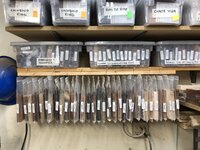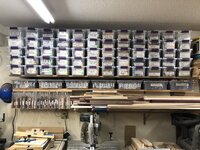If the wood is green wood from a branch or tree that I cut myself, then I coat it with whatever is convenient. For pen blank size pieces, I just take a candle and melt wax over the ends. For larger pieces, I paint the ends with a few coats of latex paint. Armorseal is better, but I have not found enough need to buy some yet.
For most pen blanks, I wonder whether people are overthinking this. Pen blanks are small and dry to equilibrium fairly quickly. I wonder whether
@MedWoodWorx is worried about a future issue that may never occur. I have seen old pen blanks shared around our club often. Some must be many decades old because they were harvested long ago, before the CITES list existed. I see them in old boxes or bags or whatever.
Is there a specific problem now? Have people seen issues with old wood pen blanks on a scale more than "once or twice, here or there"? Something associated with poor storage that would register concern?


